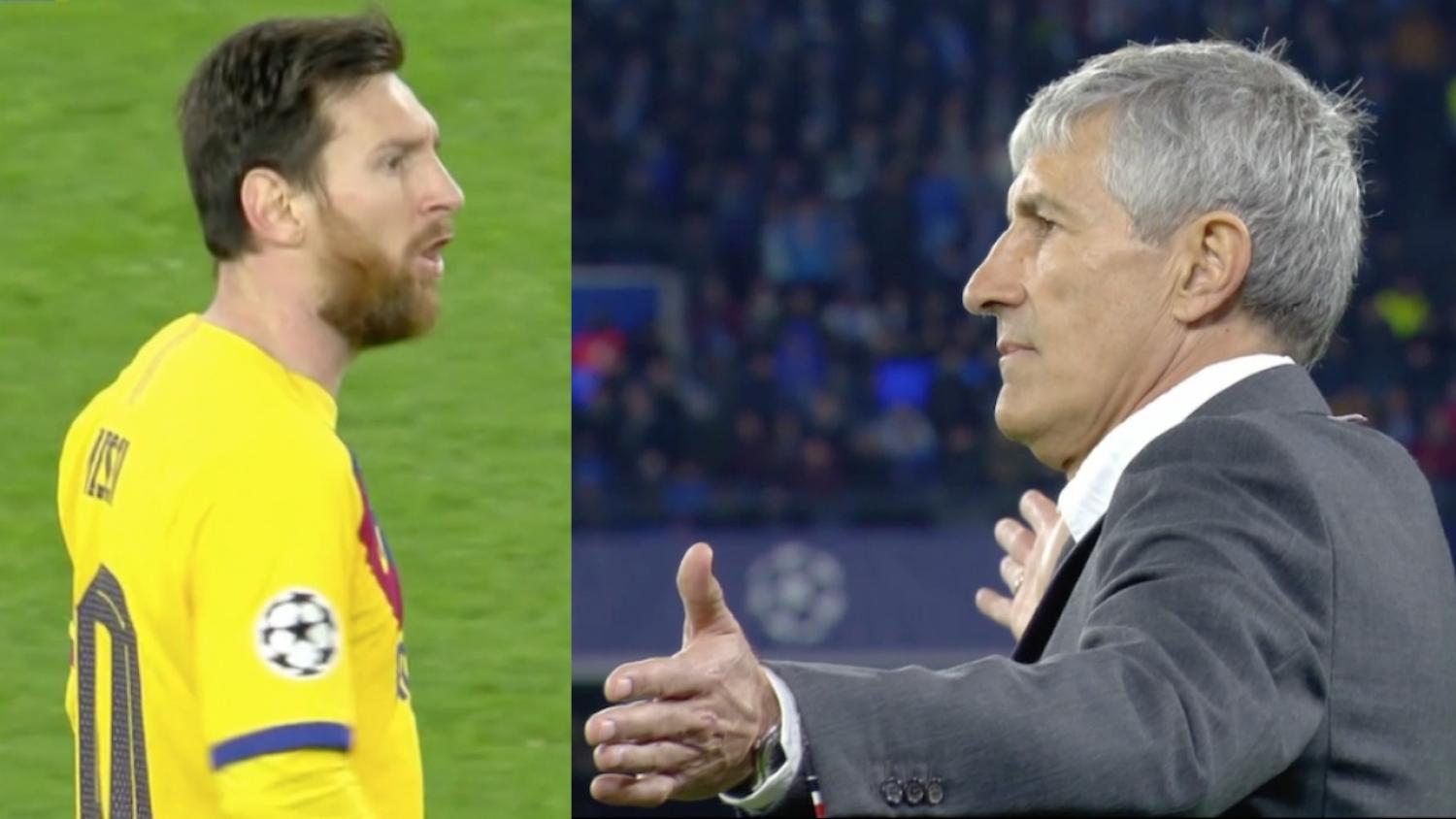There’s a graphic doing the rounds that shows the 10 players with the most combined goals and assists in Europe’s top five leagues since August 2017. Lionel Messi is obviously miles ahead in the top spot, Luis Suárez is sixth and Neymar — despite only appearing in 52 games over that period — comes in 10th.
It was only three seasons ago, but MSN seems a lifetime away. With a collection of arguably the world’s best No. 9, No. 10 and winger, there were endless variants to the ways in which Barcelona could go about killing you.
Watching Barcelona play to a 1-1 draw with Napoli on Tuesday, it was apparent how far this team has fallen since those days, and, more worryingly, perhaps even since the much more recent days of Ernesto Valverde. If Barça has improved under Quique Setién, I’ve failed to notice it.
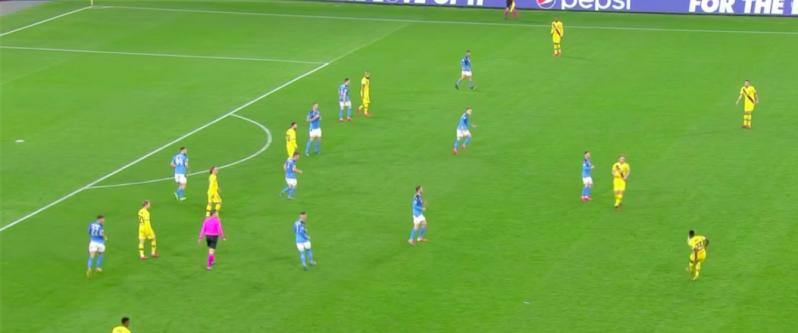
"Just stand very still. Napoli's vision is based off movement."
Unless the opponent is Manchester United, an away victory in the Champions League knockout rounds has proven beyond this Barcelona squad for a few years now, so you could argue that coming from a goal down at the San Paolo represents an improvement. Away from the Camp Nou, this team has all the mental fortitude of a 17th-century resident of Salem, Massachusetts.
But Barcelona’s internal crisis is only surpassed by Napoli, a club sitting sixth in Serie A that’s effectively jettisoned its high-flying style of the last few years with the appointment of Gennaro “the Snarl” Gattuso. So it wasn’t surprising to see Napoli’s massed ranks clogging the center of the pitch. What was surprising was Barcelona’s obstinate reluctance to counter it.
The ball needed to get wide. Barcelona needed players with pace to get behind Napoli’s stagnant masses, and the loss of Ousmane Dembélé really hurts in this regard. But here was Arturo Vidal on the right wing, drifting inside as a quasi-target man. Here was Messi dropping deep from his False 9 position in search of possession. Here was Antoine Griezmann drifting centrally and being joined by the well-checked runs of Frenkie De Jong.
The result was a quartet of players standing listlessly on the edge of the area, exploring the idea of a striker, pointing here and there within the confinement of a few yards before ultimately abandoning the project in order to come short and receive possession with their back to goal.
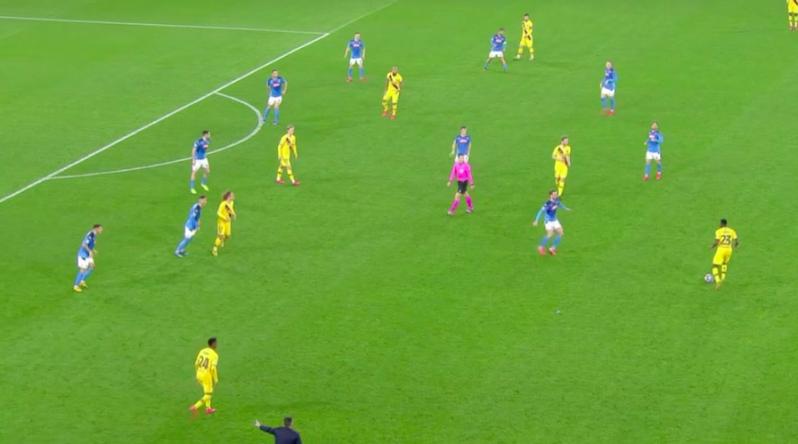
Every player checking to the ball in search of possession.
When the ball did get wide — greeted with a half-hearted wave of the arm from Vidal in the area and a run in a straight line from Point A to Point B — it was about as wholehearted as an Instagram influencer examining the subtleties and nuance of street art.
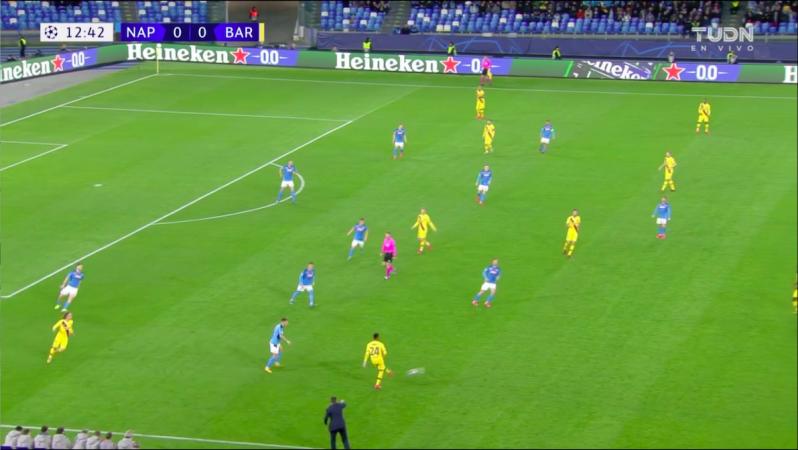
Making things as easy as possible for Napoli.
When Barcelona’s equalizer did arrive, it was a combination of Sergio Busquets’ greatness and, surprise, a well-timed run out wide from Nélson Semedo.
After finding that space, it was the simplest of tasks for Semedo and Antoine Griezmann. It’s a great goal but it was nearly impossible for Barcelona to work out. It’s hard not to juxtapose this self-imposed difficulty with the free-wheeling play of the current world champions, who dice teams apart in every quadrant of the pitch with Trent Alexander-Arnold, Andrew Robertson, Mohamed Salah and Sadio Mané bombing around.
¡Gool del @FCBarcelona!
¡Gool del @FCBarcelona!
¡Gool del @FCBarcelona!EN VIVO https://t.co/bYnWOAwg9O pic.twitter.com/C6hyNn7FyT
— TUDN USA (@TUDNUSA) February 25, 2020
If this all sounds like some sort of rallying cry against Barcelona, I’m definitely not alone in seeing these weaknesses. De Jong and Vidal — with his 89th-minute red card born of frustration — were both clearly annoyed Tuesday, and Messi himself said last week that “the way we are right now I don’t think it’s enough to win the Champions League.”
So don't be mad at me, be mad at Messi.
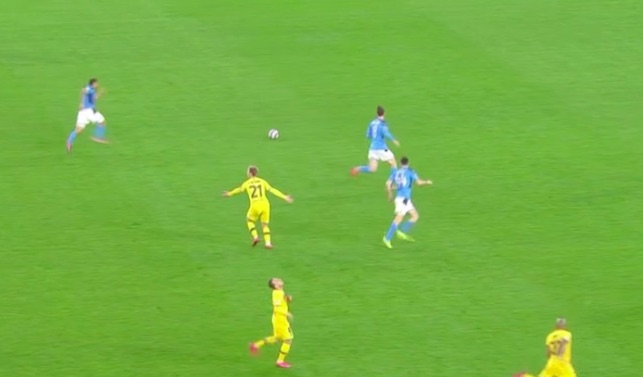
De Jong makes a pass out wide, forgetting that no one plays out wide.
Barcelona will certainly turn on the style at the Camp Nou and put Napoli to the sword, but the quarterfinals could spell the end of the road.


